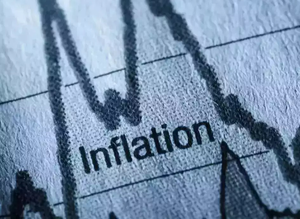Mumbai: Conditions are shaping up for an extension of a trend upshift in real GDP growth in India, though extreme weather events along with prolonged geo-political tensions may pose a risk to inflation, said the RBI’s April Bulletin released Tuesday.
The retail inflation based on the Consumer Price Index (CPI), which the Reserve Bank of India (RBI) factors for its monetary policy, eased to 4.9 per cent in March after remaining at 5.1 per cent during the two preceding months.
“There is a sizzle in the spring of 2024,” said an article on ‘State of the Economy’ published in the Bulletin.
Global weather agencies are in agreement that March 2024 was the warmest March since record-keeping began in 1850 – the global surface temperature was at 1.6 degrees Celsius (3.01°F) above the 1880-1899 period.
Careful monitoring during the summer is warranted as overlapping food price shocks play out, before an above-normal Southwest monsoon this year, as projected by the India Meteorological Department (IMD), enabling an easing of food price pressures, said the article authored by a team lead by RBI deputy governor Michael Debabrata Patra.
“In the near term, however, extreme weather events may pose a risk to inflation along with prolonged geopolitical tensions that could keep crude oil prices volatile.
“Overall, the projection indicates further easing of headline inflation in the coming months before unfavourable base effects kick in during the second half of the year, which have to be seen off,” it said.
While alignment with the inflation target is gradually occurring, incoming data will provide greater clarity and confidence on the disinflation path, it added.
On economic growth, the article said conditions are shaping up for an extension of the trend upshift that took the average real GDP growth above 8 per cent during 2021-24.
“In order to achieve its developmental aspirations over the next three decades, the Indian economy must grow at a rate of 8-10 per annum over the next decade to reap the demographic dividend that started accruing from 2018 and, as calculations show, will last till 2055,” it said.
It also noted that global growth momentum has been sustained in the first quarter of 2024 and the outlook for global trade is turning positive. Treasury yields and mortgage rates are ticking up in major economies as expectations of interest rate cuts are being pared.
On stock exchanges introducing a beta version of the T+0 rolling settlement cycle on an optional basis in equity cash markets for a limited set of scrips effective from March 28 this year, the authors said it marks a landmark in the progress of settlement and clearing timelines relative to global financial markets, showcasing India’s Market Infrastructure Institutions (MIIs) global leadership in the digital ecosystem.
The RBI said the views expressed in the Bulletin article are of the authors and do not represent the views of the central bank.
The article further said that while credit growth (y-o-y) picked up across the board, it remained higher for private sector banks (PVBs) (19.3 per cent) compared to public sector banks (PSBs) (14.7 per cent).
PSBs, however, continued to be the major driver of incremental credit extended by all scheduled commercial banks (SCBs) in 2023-24.
Also, transmission across bank groups indicates that the increase in the deposit and lending rates was higher in the case of public sector banks, except for outstanding loans, from May 2022 to February 2024.
The lending rates of PSBs continued to remain lower than those of private banks while their deposit rates were higher, the article added.
PTI
